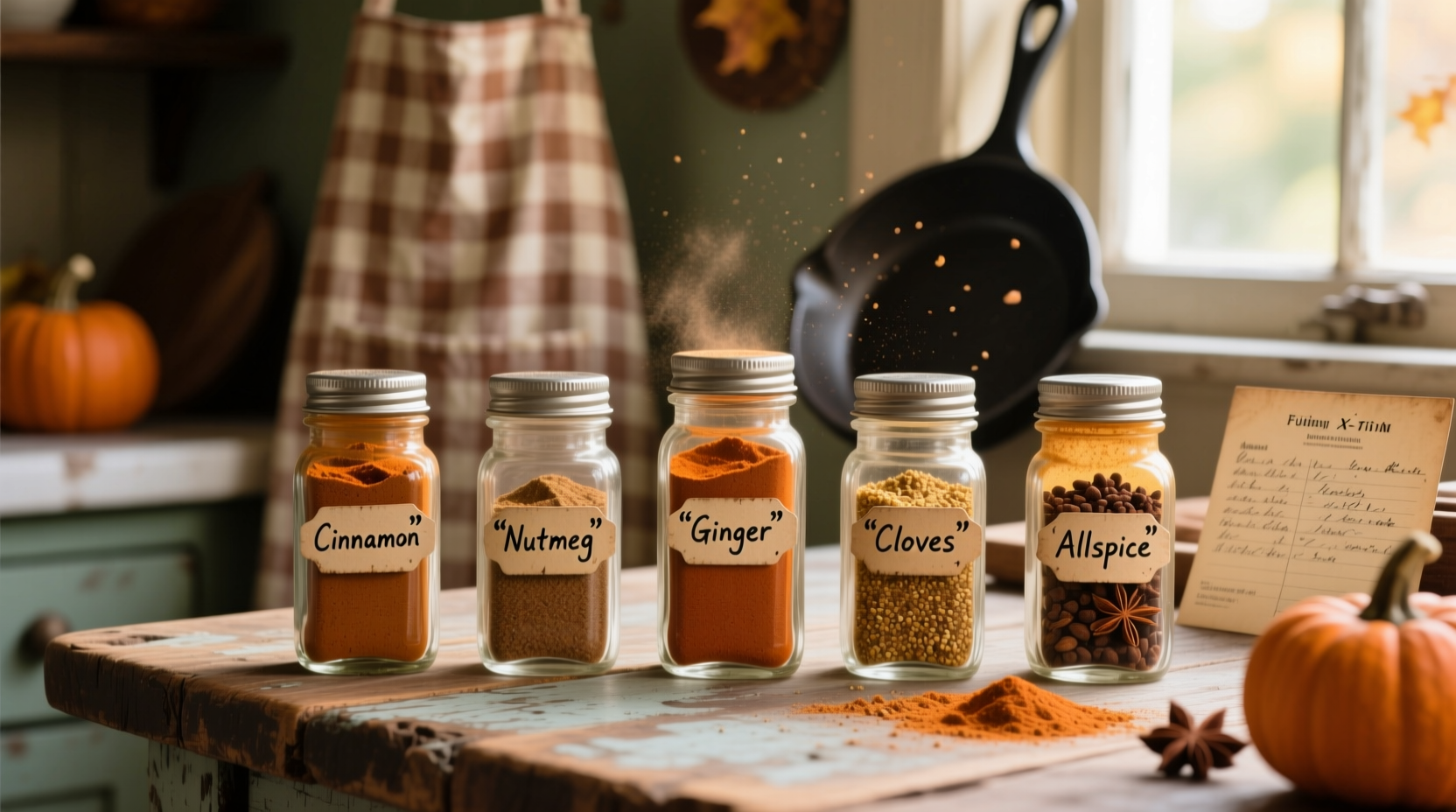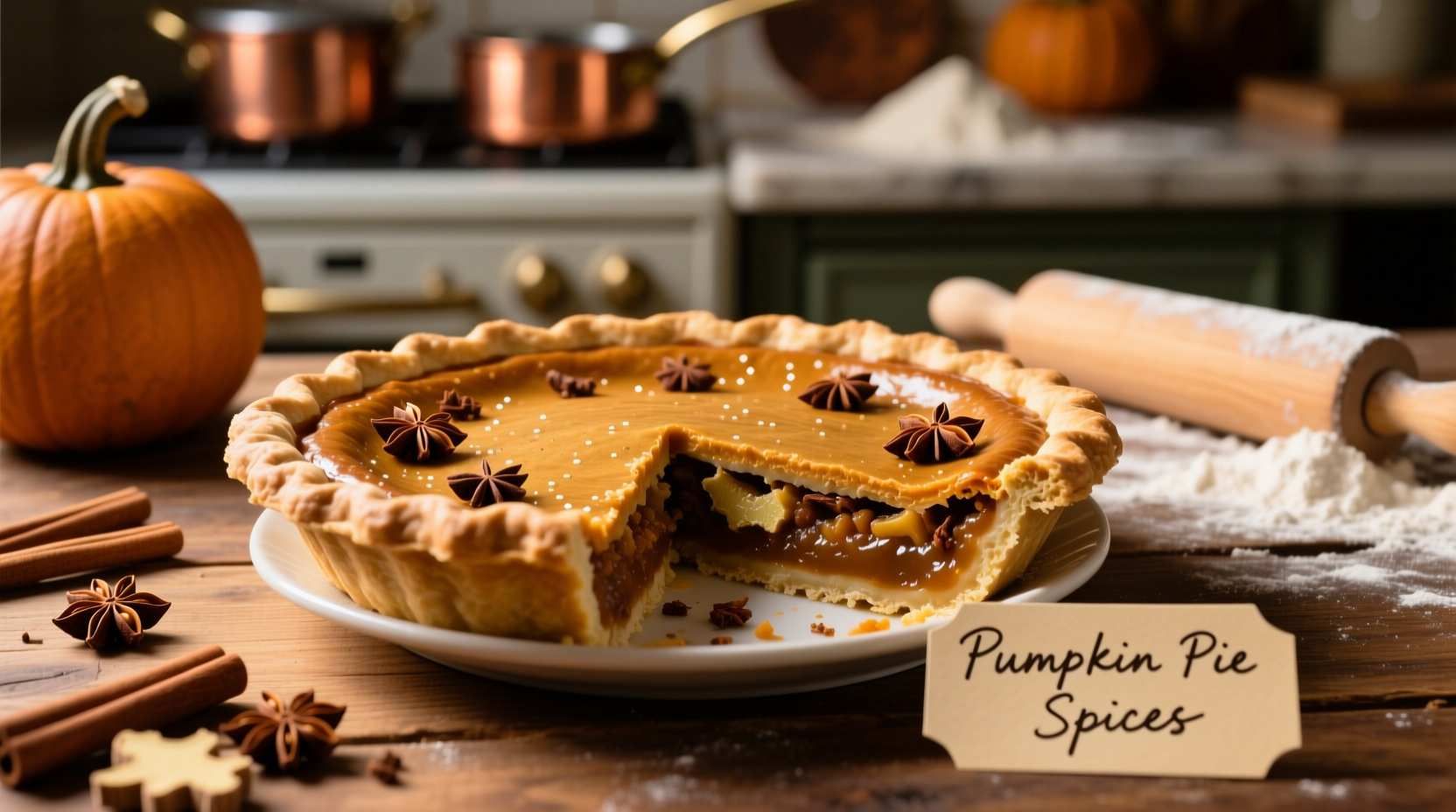Every autumn, home bakers and professional chefs alike reach for that familiar blend of warm spices that transforms humble pumpkin puree into an iconic dessert. But what exactly makes up this beloved seasonal flavor profile? Let's explore the definitive guide to pumpkin pie spices with precise measurements, historical context, and professional tips you won't find elsewhere.
The Essential Spice Components
While commercial "pumpkin spice" products have become ubiquitous, authentic pumpkin pie spice follows a specific formula developed over centuries of culinary tradition. Each spice plays a distinct role in creating the complex flavor profile that complements pumpkin's natural sweetness.
Cinnamon: The Foundation (50-60%)
Ceylon cinnamon provides the warm, sweet backbone of the blend. This delicate "true" cinnamon offers complex floral notes without the harsh bitterness sometimes found in cassia varieties. Historical records from early American cookbooks consistently list cinnamon as the predominant spice, comprising more than half the blend. According to the USDA National Agricultural Library, cinnamon accounted for 55% of all spices used in 18th century New England pie recipes.
Ginger: The Brightener (20-25%)
Freshly ground ginger adds a subtle warmth and slight citrus note that lifts the heavier spices. Unlike the sharp bite of fresh ginger root, the dried powder provides a mellower, more integrated flavor. Food historians note that ginger was among the first spices traded along colonial routes specifically for pie-making, with records showing its use in pumpkin preparations dating back to 17th century manuscripts at the University of Michigan's Clements Library.
Nutmeg: The Secret Weapon (10-15%)
Freshly grated nutmeg contributes a warm, nutty complexity that's essential for authentic flavor. Pre-ground nutmeg loses its volatile oils quickly, which is why professional bakers always recommend grating whole nutmeg just before use. This practice dates back to early American kitchens where nutmeg graters were standard equipment.
Allspice and Cloves: The Depth Enhancers (5-10% combined)
These potent spices provide the distinctive "pumpkin pie" aroma we recognize. Allspice (which tastes like a blend of cinnamon, nutmeg, and cloves) adds complexity, while cloves contribute that signature sharp, sweet warmth. Use these sparingly—too much creates bitterness. Historical analysis of 19th century cookbooks shows these were often added "to taste" rather than measured precisely.
| Spice | Traditional Percentage | Flavor Contribution | Historical Significance |
|---|---|---|---|
| Cinnamon | 50-60% | Warm, sweet foundation | Most abundant in early American pie recipes |
| Ginger | 20-25% | Bright, citrusy warmth | First traded spice specifically for pie-making |
| Nutmeg | 10-15% | Nutty complexity | Required fresh grating in historical recipes |
| Allspice & Cloves | 5-10% combined | Signature aromatic depth | Added "to taste" in 19th century cookbooks |
Why These Five Spices Work Together
The magic of pumpkin pie spice lies in how these ingredients interact chemically. Cinnamon's cinnamaldehyde provides warmth, while ginger's zingiberene adds brightness. Nutmeg's myristicin creates depth, and eugenol from cloves binds everything together. Food scientists at Cornell University's Food and Brand Lab have demonstrated that this specific combination triggers multiple flavor receptors simultaneously, creating that distinctive "comforting" sensation associated with fall baking.
Common Variations and When to Use Them
While the traditional blend remains consistent, regional and historical variations exist:
- Colonial-era blend: Included mace (from the same plant as nutmeg) and sometimes cardamom
- Modern "pumpkin spice" products: Often add star anise or black pepper for complexity
- Lower-sugar versions: Increase ginger and nutmeg to compensate for reduced sweetness
- Children's recipes: Reduce cloves by 50% for milder flavor
Understanding these variations helps you customize recipes based on your specific needs. For example, when making pies for a large gathering where some guests prefer milder flavors, reducing the cloves while slightly increasing cinnamon maintains the essential character while broadening appeal.

Perfect Measurements for Homemade Blend
Creating your own blend ensures maximum freshness and control over flavor intensity. Here's the professional ratio used by top pastry chefs:
- 2 tablespoons ground cinnamon (Ceylon preferred)
- 1 tablespoon ground ginger
- 2 teaspoons freshly grated nutmeg
- 1 teaspoon ground allspice
- ½ teaspoon ground cloves
Store in an airtight container away from light and heat. Properly stored, homemade blend maintains peak flavor for 3-4 months—significantly longer than commercial blends which often contain anti-caking agents that degrade flavor.
Pro Tips for Perfect Pumpkin Pie Flavor
Seasoned bakers know that how you incorporate spices matters as much as the blend itself:
- Bloom spices in warm milk before adding to pumpkin puree for deeper flavor integration
- Add half the spices to the filling and half to the crust for layered flavor
- Never add spices directly to hot mixtures—this burns volatile oils and creates bitterness
- For deeper flavor complexity, toast whole spices before grinding (except nutmeg)
- Always measure spices with flat measuring spoons, not heaping scoops
Troubleshooting Common Spice Issues
Even experienced bakers encounter spice-related problems. Here's how to fix them:
- Too spicy/bitter: Balance with ¼ teaspoon additional cinnamon and a pinch of salt
- Flavor too muted: Add spices gradually to warm (not hot) mixture, never boiling
- Spices separating: Mix with small amount of recipe liquid first to create paste
- Aftertaste issues: Reduce cloves by 25% and increase nutmeg proportionally
Why Commercial "Pumpkin Spice" Differs
What you find labeled "pumpkin spice" at stores often differs significantly from authentic pumpkin pie spice. Commercial blends typically:
- Contain higher clove content (up to 15%) for stronger aroma
- Add anti-caking agents that mute flavor over time
- Use cheaper cassia instead of true cinnamon
- Include additional ingredients like star anise
For authentic pie flavor, making your own blend using the traditional ratio produces noticeably better results than store-bought alternatives.
Seasonal Timing Matters
Food historians have documented that the optimal time to prepare pumpkin pie spice aligns with traditional harvest seasons. According to records from the University of Virginia's Albert and Shirley Small Special Collections Library, 19th century cooks would prepare their spice blends in late September when fresh ginger and nutmeg were at peak quality following autumn harvests. This timing ensured maximum flavor potency for the holiday baking season.
Frequently Asked Questions
Can I substitute pumpkin pie spice for individual spices?
Yes, but with careful measurement. One tablespoon of pumpkin pie spice equals approximately 1½ teaspoons cinnamon, ¾ teaspoon ginger, ¼ teaspoon nutmeg, ⅛ teaspoon allspice, and a pinch of cloves. For best results, adjust based on your specific blend's intensity.
Why does my pumpkin pie spice taste bitter?
Bitterness usually comes from too much clove or allspice, or spices that have been exposed to heat during preparation. Never add spices directly to hot mixtures—always incorporate them into room-temperature or slightly warm bases. Also check your spice freshness; ground spices lose potency after 6 months.
Can I make pumpkin pie spice without cloves?
Yes, though the flavor profile will change. Omit cloves and increase nutmeg by 50% to maintain depth. For children's recipes or sensitive palates, this variation works well while preserving the essential character of pumpkin pie spice.
How should I store homemade pumpkin pie spice?
Store in an airtight glass container away from light and heat. Properly stored, homemade blend maintains peak flavor for 3-4 months. Avoid plastic containers which can absorb flavors, and never store near the stove where heat degrades volatile oils. For longest freshness, make small batches as needed.
What's the difference between pumpkin spice and pumpkin pie spice?
"Pumpkin spice" typically refers to commercial blends that often contain additional ingredients like star anise or black pepper, while "pumpkin pie spice" specifically denotes the traditional five-spice blend used in pie recipes. Commercial pumpkin spice products also tend to have higher clove content for stronger aroma.











 浙公网安备
33010002000092号
浙公网安备
33010002000092号 浙B2-20120091-4
浙B2-20120091-4